Heat wave: What to know when extreme hot weather is forecasted
The official start of summer is on the horizon and with the sunny weather comes heat waves and the dangers associated with them.
With Bucks County expected to have a steamy summer, starting with this week's prolonged heat wave, it's good to know how to prepare for the weather.
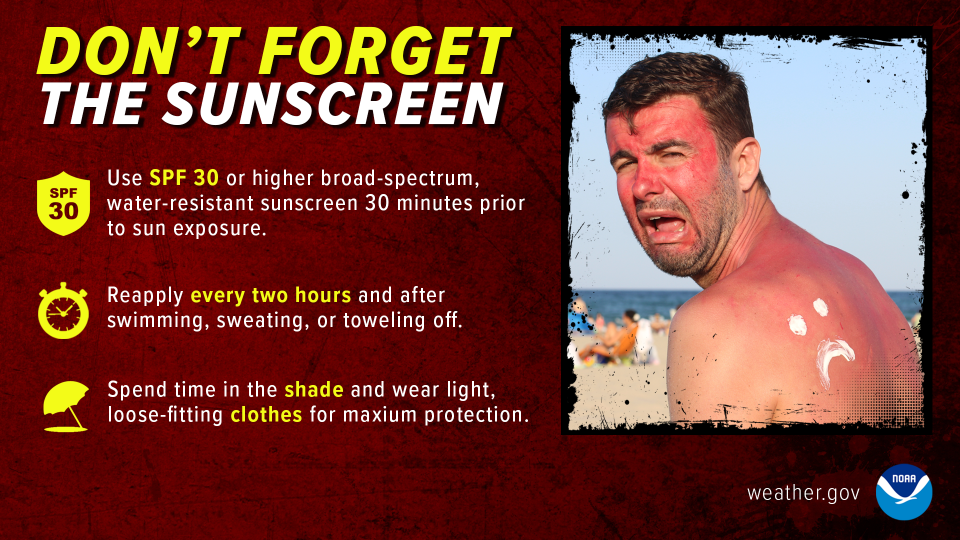
What is a heat wave?
According to the National Weather Service, a heat wave is a period of abnormally hot weather lasting more than two days. Heat waves are not dependent on humidity and cover large areas.
What are heat advisories?
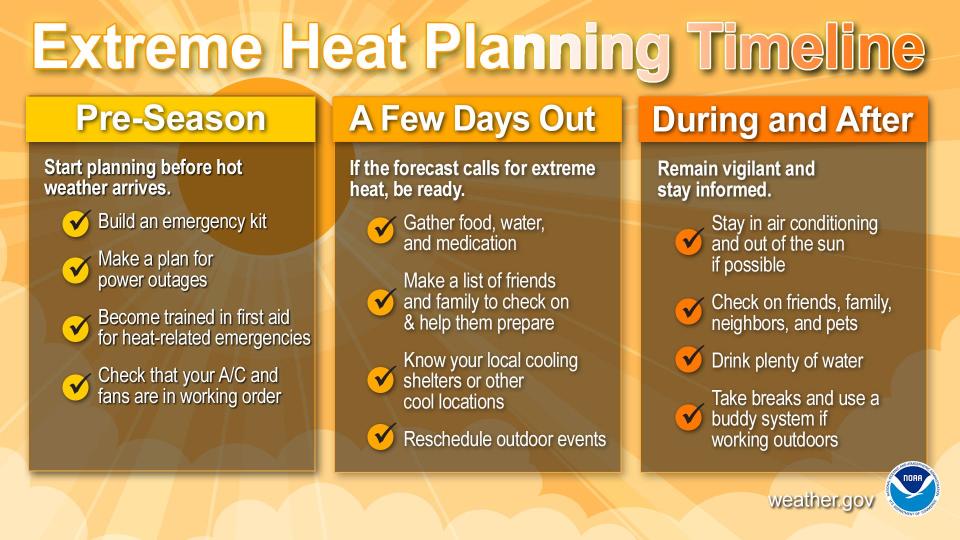
There are four advisories for heat, according to the National Weather Service:
Excessive heat outlooks: The outlooks are issued when the potential exists for excessive heat within the next three to seven days. It gives people time to prepare for the weather.
Heat advisory: A heat advisory is issued within 12 hours of extreme heat conditions. Typically, the heat index will be above 100 degrees and the nighttime air temperature will not drop below 75 degrees. However, the criteria are different for different areas.
Excessive heat watch: Heat watches are issued when conditions are favorable for excessive heat in the next 24 to 72 hours.
Excessive heat warning: The warning is issued within 12 hours of the onset of extremely dangerous heat conditions.
Preparing for severe weather: What's the difference between a tornado watch and warning? Tips about severe weather
Beat heat in Bucks County: 22 indoor spots around Bucks County to keep kids cool and entertained in heat wave
What is heat index?
We've all heard: "It's not the heat; it's the humidity." Well, it's not just a cliché; there is truth to it. According to the National Weather Service, the heat index is what the temperature feels like to the human body when relative humidity is combined with the air temperature.
Put it simply, when the body sweats, the perspiration evaporates, cooling the body. When the humidity is high, the sweat doesn't evaporate as quickly and the body doesn't cool itself as well. Therefore, the body feels warmer. The heat index represents the heat you're feeling outside.
There are four classifications for heat index, according to the National Weather Service:
Caution: When the heat index is 80-90 degrees, the body may feel fatigued with prolonged exposure and physical activity.
Extreme caution: When the heat index is 90-103 degrees, the body may feel heat stroke, heat cramps and heat exhaustion with prolonged exposure and physical activity.
Danger: When the heat index is 103-124 degrees, heat cramps or heat exhaustion is likely and heat stroke is possible with prolonged exposure and physical activity.
Extreme danger: When the heat index is 125 degrees or higher, heat stroke is likely.
Heat Index calculator
Here's a chart to help you find out what the heat index is. You can also use this heat index calculator.
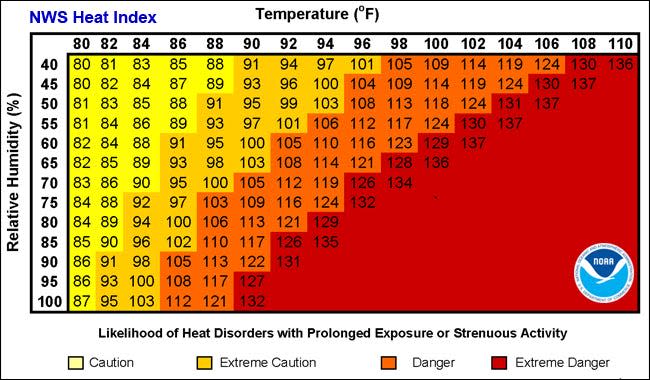
What are heat-related illnesses?
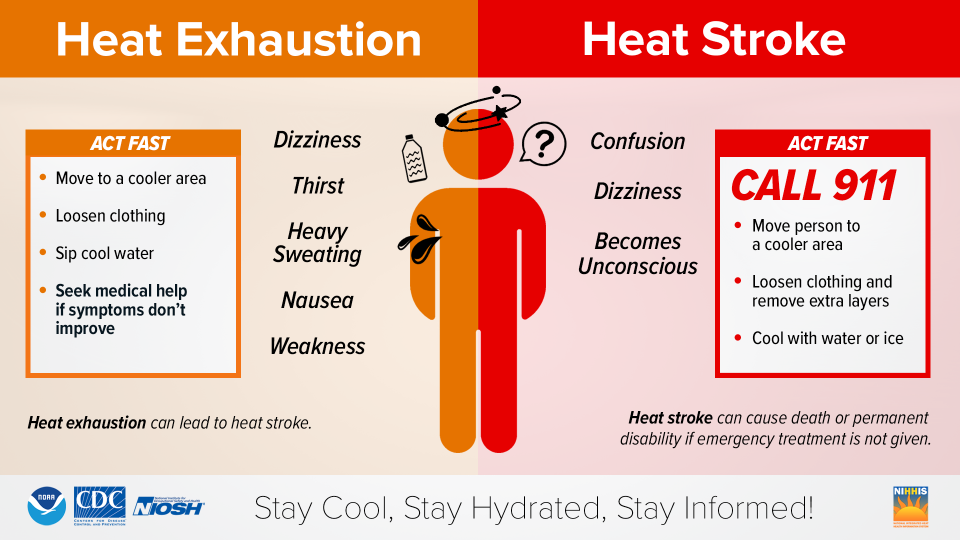
During extremely hot and humid weather, the body is challenged to cool itself. When the body struggles too much, several heat-related illnesses can occur. According to the National Weather Service, here's what to watch for:
Heat cramps: Heat cramps are the first sign of heat-related illnesses. The symptoms include muscle cramps and spasms typically in the legs or abdomen. You should apply pressure on the cramping muscle or gently massage the muscle. The person should also try to sip water unless they are nauseous. If the cramps last more than an hour, the person should seek medical attention.
Heat exhaustion: A person who has heat exhaustion will sweat heavily, be tired, cool and clammy, have a weak, fast pulse, have muscle cramps, dizziness, nausea, headaches and may faint. Move the person to a cool area, loosen clothes and apply cool wet clothes or have the person sit in a bath. Offer water. If a person vomits more than once or symptoms worsen, seek immediate medical attention.
Heat stroke: The symptoms of heat stroke include a body temperature above 103 degrees, a throbbing headache, confusion, nausea, fainting or a loss of consciousness. Call 911 or get the person to a hospital immediately.
Who is most vulnerable in the heat?
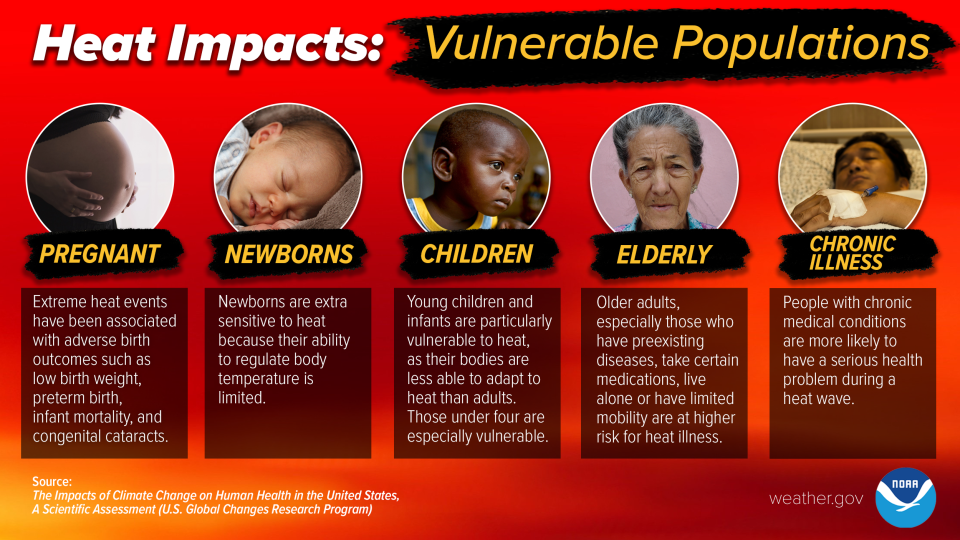
According to the National Weather Service, heat is among the leading weather-related killers. These are the groups most impacted by high temperatures:
Young children and infants are particularly vulnerable to heat-related illness and death, as their bodies are less able to adapt to heat than are adults.
Older adults, particularly those with preexisting diseases, take certain medications, are living alone or with limited mobility and are exposed to extreme heat can experience multiple adverse effects.
People with chronic medical conditions are more likely to have serious health problems during a heat wave than healthy people.
Pregnant women are also at higher risk. Extreme heat events have been associated with adverse birth outcomes such as low birth weight, preterm birth, and infant mortality, as well as congenital cataracts.
More: Bucks County's public pools open for heat wave. Where to dive in to stay cool
How to handle pets in the heat
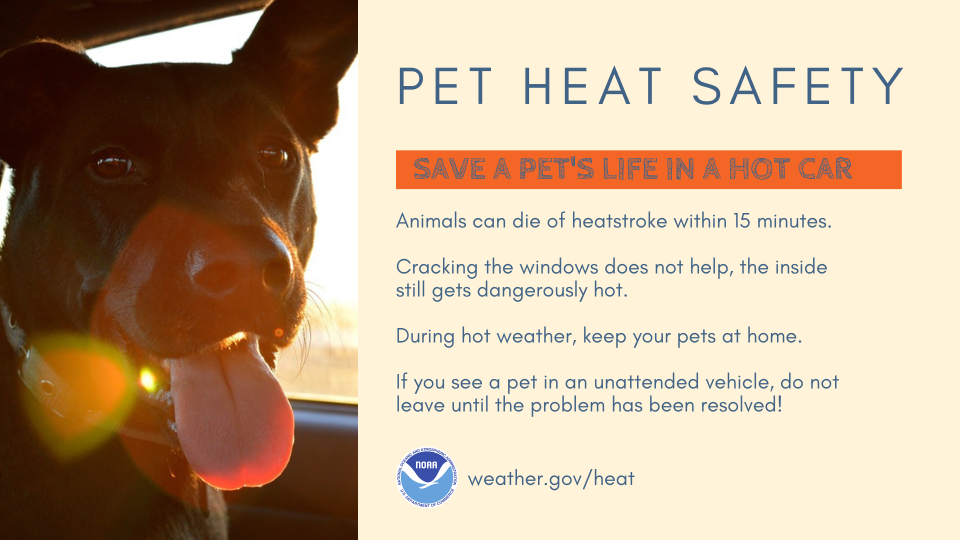
When heat waves hit, dogs are also susceptible to heat stress and head strokes, according to the American Kennel Club.
Heat stress: Heat stress in dogs occurs when a dog's resting temperature hits 104 degrees. The signs and symptoms of heat stress include a dog looking for shade, limiting its movements, choosing to sit or lie down, panting, vomiting and excessive saliva.
Heat stroke: This condition occurs when your dog's resting body temperature exceeds 106 degrees. The symptoms include the dog acting confused; excessive drooling and thickening saliva; gums being bright red, blue or purple; refusing to drink water; losing consciousness; or having seizures. Immediate veterinary attention is required.
If your pet is exposed to extreme heat, the AKC suggests getting your dog to a shady spot, applying ice packs under the dog's front legs on their chest, and pouring cold water over their head and body. Dogs should be given water to drink. A cooling mat for the dog to sit or stand on would be helpful as well.
In addition, according to the American Kennel Club, with temperatures 85 degrees or higher for a sustained period, dog owners need to be careful with hot asphalt, pavement and sand. The hot surface can cause blisters on your pet's paws.
This article originally appeared on Delaware News Journal: Heat waves: What to know before extreme hot weather hits

